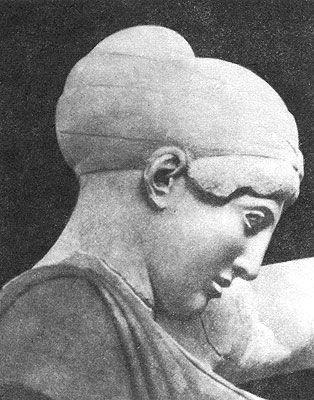Both were born in the south
Classicism
 Albrecht Dürer. The four horsemen of the Apocalypse. Unlike the classics, classicism is not a qualitative, but a functional concept; it expresses a certain tendency of artistic thinking based on the desire for simplicity, clarity, rationality, and the consistency of the artistic image.
Albrecht Dürer. The four horsemen of the Apocalypse. Unlike the classics, classicism is not a qualitative, but a functional concept; it expresses a certain tendency of artistic thinking based on the desire for simplicity, clarity, rationality, and the consistency of the artistic image.
Classicism is turned to the future, not to the past, and this is its artistic and historical meaning. The basis of the classical worldview is a specific understanding of beauty, the belief that beauty is eternal. Continue reading
Gothic
 Stained glass window, fragment with architectural ornament. Colored glass, painting, lead. Germany. Late 14th century. The Gothic style is an artistic style that was the final stage in the development of the Middle Ages of art of the countries of Western, Central and partially Eastern Europe (between the mid 12th and 16th centuries). The term “Gothic” was introduced into the Renaissance as a derogatory designation of all medieval art, which was considered “barbaric”. From the beginning of the 19th century, when the term Romanesque was adopted for art, the chronological framework of the Gothic style was limited, it marked the early, mature (high) and late phases. Continue reading
Stained glass window, fragment with architectural ornament. Colored glass, painting, lead. Germany. Late 14th century. The Gothic style is an artistic style that was the final stage in the development of the Middle Ages of art of the countries of Western, Central and partially Eastern Europe (between the mid 12th and 16th centuries). The term “Gothic” was introduced into the Renaissance as a derogatory designation of all medieval art, which was considered “barbaric”. From the beginning of the 19th century, when the term Romanesque was adopted for art, the chronological framework of the Gothic style was limited, it marked the early, mature (high) and late phases. Continue reading
Empire
 David Jacques Louis The oath of the Horatii Empire (French empire – the empire from the Latin. Imperium – command, power) – artistic style, created in France in the beginning of the XIX century, in the era of the empire of Napoleon Bonaparte. The chronological framework of the original French “Empire Style” is limited to a very short period of time: from the end of the reign of the Directory (1799) or the year of Napoleon’s coronation (1804) to the restoration of the Bourbon dynasty (1815). Continue reading
David Jacques Louis The oath of the Horatii Empire (French empire – the empire from the Latin. Imperium – command, power) – artistic style, created in France in the beginning of the XIX century, in the era of the empire of Napoleon Bonaparte. The chronological framework of the original French “Empire Style” is limited to a very short period of time: from the end of the reign of the Directory (1799) or the year of Napoleon’s coronation (1804) to the restoration of the Bourbon dynasty (1815). Continue reading



